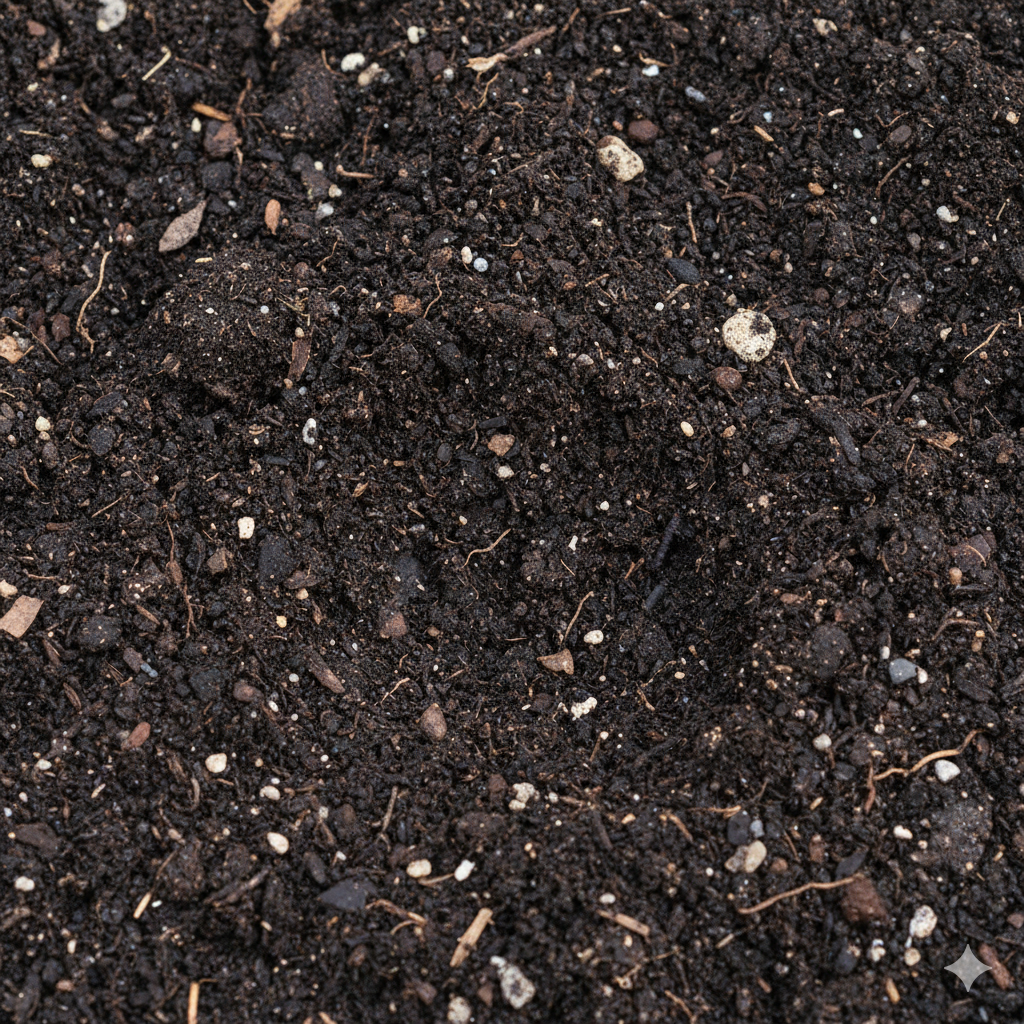Topsoil (General Landscaping)

Bulk soil from the upper ground layer used for landscaping. Quality varies widely; often heavy, not sterile, and unsuitable alone for pots.
🧱 Texture, Drainage & Fertility
Texture: medium to heavy (varies)
Drainage: moderate to poor (varies)
Fertility: variable (often moderate)
Organic Matter: variable
Tendencies: compacts easily, may contain weed seeds/pathogens, inconsistent particle size
🧪 pH
Typical pH Range: 6.0–7.5
✅ Best Suited For
- Garden beds (mixed with compost)
- Lawn top‑dressing/leveling
- Raised bed base layer (not the top 20–30 cm)
⚠️ Not Ideal For
- Indoor or balcony containers on its own
- Seed starting
🛠️ Amendments & Improvements
- Sieve to remove stones/clods
- Blend with compost/coir and perlite for structure
- Solarize if weed pressure is high
🪴 Recommended Container Mix
Use only 10–20% of topsoil blended into a potting mix: 40% coco coir, 30% compost, 20% perlite, 10% topsoil.
🔍 Diagnostics
Hand Test: Forms a strong clod/ball; may smear when wet.
Jar Test: Mixed fractions; often higher fines causing slow drainage.
🐛 Common Issues & Fixes
- Waterlogging and compaction in pots: Limit to small fraction in containers; add perlite/bark; ensure large drainage holes.
💡 Care Tips
- Avoid pure topsoil in containers
- Build organic matter in beds with regular compost and mulch
🌦️ Malaysia Notes
Monsoon rain can compact and puddle topsoil—use raised beds and surface mulch.
Note
Use these profiles as practical guides. Local site conditions vary—observe water infiltration, plant responses, and adjust amendments accordingly.